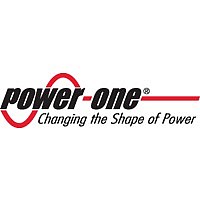PSC129-2IR Power-One, PSC129-2IR Datasheet - Page 5

PSC129-2IR
Manufacturer Part Number
PSC129-2IR
Description
Psc Series Extended Positive Switching Regulators Benign
Manufacturer
Power-One
Datasheet
1.PSC129-2IR.pdf
(12 pages)
Thermal Considerations
When a switching regulator is located in free, quasi-station-
ary air (convection cooling) at a temperature T
is operated at its nominal output current I
temperature T
phase, measured at the Measuring point of case tempera-
ture T
Under practical operating conditions, the ambient tempera-
ture T
(heat sink, fan, etc.) are taken to ensure that the case tem-
perature T
Example: Sufficient forced cooling allows T
simple check of the case temperature T
load ensures correct operation of the system.
Fig. 4
Output current derating versus temperature.
I
Fig. 3
Dynamic load regulation.
REV. MAY 12, 2004
V
1.0
0.9
0.8
0.7
0.6
0.5
0.4
0.3
0.2
0.1
o
1
0
/ I
o
0
I
o
o nom
T
/ I
A min
o nom
C
A
(see: Mechanical Data ).
Convection cooling
V od
may exceed 50°C, provided additional measures
C
does not exceed its maximum value of 80°C.
40
C
≥10 µs
will be about 80°C after the warm-up
t
d
50
Forced cooling
D V
60
o I
V od
70
C
( T
≥10 µs
A max
o nom
C
80
t
≤80°C) at full
A
d
= 50°C and
, the case
= 65°C. A
T
C max
T
A
D V
Page 5 of 12
[ C
05010
o I
t
t
Positive Switching Regulators (Benign)
Output Protection
A voltage suppressor diode which in worst case conditions
fails into a short circuit, protects the output against an inter-
nally generated overvoltage. Such an overvoltage could
occur due to a failure of either the control circuit or the
switching transistor. The output protection is not designed
to withstand externally applied overvoltages. The user
should ensure that systems with Power-One power
supplies, in the event of a failure, do not result in an unsafe
condition (fail-safe).
Short Circuit Behaviour
A constant current limitation circuit holds the output current
almost constant whenever an overload or a short circuit is
applied to the regulator's output. It acts self-protecting and
recovers – in contrary to the fold back method – automati-
cally after removal of the overload or short circuit condition.
1.2
1.0
0.8
0.6
0.4
0.2
Fig. 5
Overload, short-circuit behaviour V
Parallel and Series Connection
Outputs of equal nominal voltages can be parallel-con-
nected. However, the use of a single unit with higher output
power, because of its power dissipation, is always a better
solution.
In parallel-connected operation, one or several outputs
may operate continuously at their current limit knee-point
which will cause an increase of the heat generation. Conse-
quently, the max. ambient temperature value should be re-
duced by 10 K.
Outputs can be series-connected with any other module. In
series-connection the maximum output current is limited by
the lowest current limitation. Electrically separated source
voltages are needed for each module!
V
o
0
/ V
o nom
PSC Series Extended Data Sheet
0.2
0.4
0.6
0.8
1.0
o
versus I
I
o L
1.2
o
05033
.
1.4
I
o
/ I
o nom














